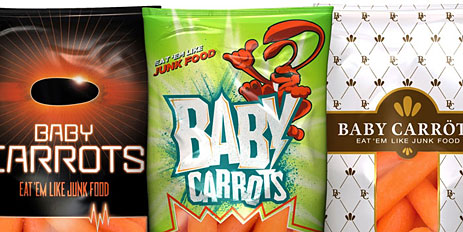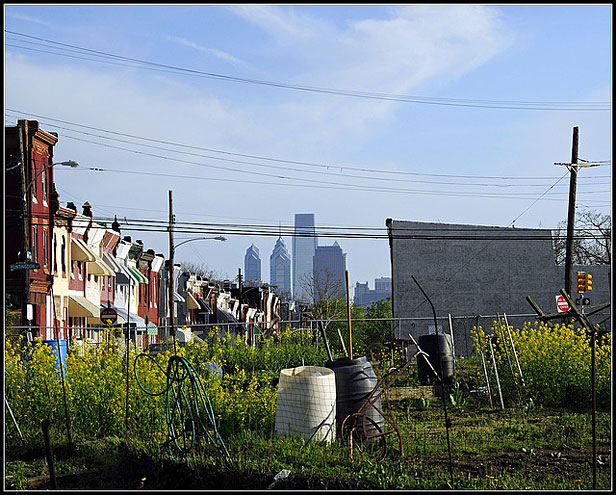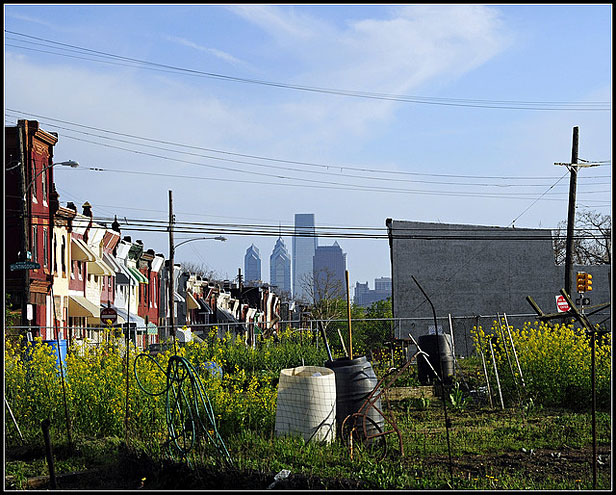 The place for me: A view of Philadelphia from Glenwood Green Acres, a community garden run by the city in the Susquehanna neighborbood. Photo: Tony the Misfit
The place for me: A view of Philadelphia from Glenwood Green Acres, a community garden run by the city in the Susquehanna neighborbood. Photo: Tony the Misfit
Philadelphia has long been a gardeners’ paradise, by East Coast standards anyway. The City of Brotherly Love enjoys relatively short winters and extended fall and spring seasons that aren’t so wet and warm that they invite plagues of the pests that rule farther south.
It’s not surprising then that urban agriculture has deep roots here — ones planted long before the recent national renaissance. But Philly’s homegrown ag movement isn’t just about getting more local produce into farmers markets. (Not that there’s anything wrong with that!) It’s focused on farming as a source of jobs and skills for city residents as well as a means to provide them affordable, healthy food.
The city is known among food advocates as providing the model for President Obama’s Healthy Food Financing Initiative to eliminate so-called “food deserts,” or areas without access to affordable, fresh food. Like its inspiration, Pennsylvania’s Fresh Food Financing Initiative — which has helped establish more than 80 grocery stores throughout the state — the administration’s plan would provide low-cost loans to finance grocery stores and supermarkets across the country.
From brownfield to green rows
Philly’s municipal support for farming dates back to the Vacant Lot Cultivation Commission established in the late 19th century. Jump forward to 1943, by which time the city of Philadelphia had opened what is now called the W.B. Saul High School of Agricultural Sciences. At 150 acres, it’s the nation’s largest agricultural high school, complete with herds of Holstein and Jersey dairy cattle, Belted Galloway beef cattle, eight quarter horses, a flock of sheep, and a Community-Supported Agriculture (CSA) program — and a 95 percent graduation rate. Indeed, you can draw a line from these efforts through the city’s wartime Victory Gardens, to the anti-blight attempts of the “modern” community garden movement of the 1970s and 1980s, right through to today’s reawakened interest in growing food in the city.
Granted, it’s by no means a straight line. The anti-blight community garden efforts faltered in the ’90s as the city government withdrew its support, for example.
But these days, school gardens proliferate, and the city is home to efforts like Greensgrow (see Grist’s recent profile), a city-block sized farm on a former brownfield in the middle of a densely developed working class neighborhood. Greensgrow is now pioneering a pilot project, Local Initiative for Food Education, that gives food-stamp recipients a special veggie box and cooking help (see profile below).
The city is also host to two multi-acre farms, one at the Schuylkill Center, a nature preserve that operates a farm stand and a CSA in a surprisingly verdant area in the northwest part of the city. The other is managed by the member-owned Weavers Way Co-op grocery stores (more on that below, and full disclosure — I’m a Weavers Way member, and the co-op hosts my Beyond Green blog).
Mayor Michael Nutter has issued a series of food-focused proposals and initiatives, including creating a food policy council and releasing the Philadelphia Food Charter, which puts ag front and center. Even the city’s “Greenworks” initiative, designed to turn Philly into “the greenest city in America,” sets the goal of increasing commercial agriculture within city limits.
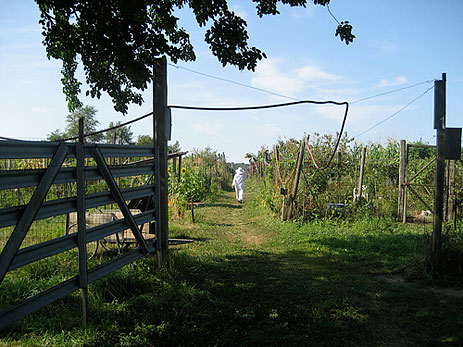 The entrance to Manatawna Farm in PhiladelphiaPhoto: momo goIncubating growth
The entrance to Manatawna Farm in PhiladelphiaPhoto: momo goIncubating growth
As a first step toward that goal, this spring the city proposed an urban farm “incubator” at the historic Manatawna Farm, a 19th-century farmstead currently part of Philadelphia’s vast Fairmount Park system and right next door to the Schuylkill Center. Dedicated to chemical-free, commercial farming, prospective farmers will pay a $500 fee for a one-year lease on a half-acre plot that comes complete with irrigation hookups, fencing, post-harvest workstations, and even toilets. If this project is fully subscribed, that would put another five acres of land in production within the city limits.
Sadly, Philly is also seeing the NIMBY brigade set its sights on urban ag projects. Neighbors of the Manatawna property oppose the plan and are fighting to stop it. Their motivations are unclear, but it’s likely an outgrowth of that strangely American belief among many homeowners that residential areas should host only bedrooms and two-car garages, not jobs and productive activity.
A second urban-farm incubator initiative takes a very different tack, one that will likely bypass the NIMBY brigade and still generate jobs and commercial activity from farming. The Pennsylvania Horticultural Society’s Growers Alliance program is an experiment in distributed agriculture. The initiative helps individual growers construct a small set of raised beds. PHS provides seedlings and other supplies and has partnered with Weavers Way Co-op to pick up and bring to market the produce from the various plots spread throughout the city — in other words, a complete “supply chain” for urban micro-farms.
Philadelphia clearly sees farming as an integral part of its future and shows no indication that urban agriculture is a foodie fad. In this town, growing food is a growing business.
Next: A closer look at three of the projects that are putting Philly on urban ag’s cutting edge.
Northwest Philadelphia
 Community breadbasket: Weavers Way Co-op market in PhiladelphiaPhoto: pwbakerThe Weavers Way Co-op, a member-owned grocery store and farm, was founded in 1972 to nourish a food de
Community breadbasket: Weavers Way Co-op market in PhiladelphiaPhoto: pwbakerThe Weavers Way Co-op, a member-owned grocery store and farm, was founded in 1972 to nourish a food de
sert in the West Mount Airy neighborhood of Northwest Philadelphia. Of course, that term wasn’t in wide use back then, but providing affordable fresh food to residents, regardless of income, has always been a core mission of this member-owned grocery store. Over time, the mission has expanded to include issues of sustainability as well as support for organic and locally produced food.
The farm, on the grounds of the nearby Awbury Arboretum, dates back almost a decade, but it wasn’t until 2007, with interest in locally grown, pesticide-free produce on the rise, that the co-op decided to hire a full-time farmer and try to make the effort commercially viable. Since then, the Weavers Way farm has grown to nearly two acres, producing a wide variety of fruits and vegetables — many of them hard to find heirloom varieties — and now includes a satellite “production farm” solely dedicated to high-demand crops like eggplants and tomatoes.
While Weavers Way has a profitable farm operation, the real “action” is in its non-profit efforts. Weavers Way runs a fully subscribed CSA program in partnership with the W.B. Saul High School, an agricultural high school in Philadelphia. It started the successful school garden at Philly’s Martin Luther King Jr. High School, now run by a full-time employee of the school with plans to expand it to other locations.
The co-op currently also grows food on a one-third acre site at the Stenton Family Manor, a local homeless shelter, that produces enough food not only to feed residents, but also to sell at local farm stands. According to Weavers Way Co-op General Manager Glenn Bergman, this kind of project represents the future of Weavers Way farming efforts — putting food gardens in schools, prisons, and work-release facilities that can offer education and skills creation while feeding hungry residents.
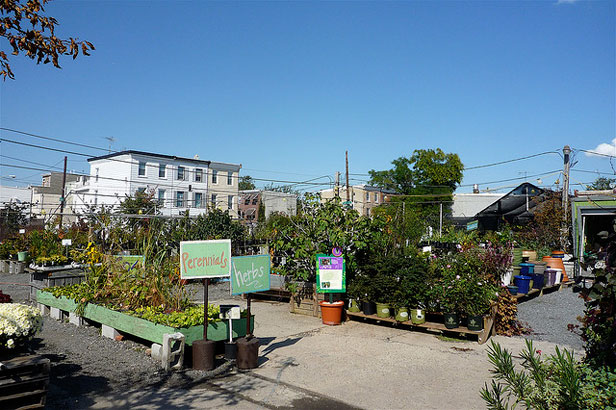 Concrete ambitions: Built on a brownfield, Greensgrow Farm wants to feed its immediate neighbors in Kensington.Photo: David Barrie
Concrete ambitions: Built on a brownfield, Greensgrow Farm wants to feed its immediate neighbors in Kensington.Photo: David Barrie
Greensgrow Local Initiative for Food Education (LIFE) CSA
Northeast Philadelphia
Mary Seton Corboy’s newest Community-Supported Agriculture program was, as she put it, “born out of frustration.” She’d built a thriving farm and nursery, with a successful multi-farm CSA, at Greensgrow Farm in Philly’s gritty Kensington neighborhood, but she wanted to see more of the low-income and working class residents who live nearby eating the products of her hard-won farming success. Yet it just wasn’t happening.
Figuring it was a “price point issue,” Seton Corboy decided to construct a CSA program for the area’s many food-stamp recipients that would take advantage of Greensgrow’s creation of a community kitchen at a nearby church. She dubbed the program LIFE (for “Local Initiative for Food Education”) and it’s a combination of a weekly food basket and cooking classes. To pull this off, Seton Corboy had to find a way around the numerous USDA roadblocks that prevent a typical CSA from accepting food stamps — mostly due to the fact that the “pre-paid” concept of a typical CSA violates USDA regulations. So Seton Corboy partnered with Philadelphia’s The Redevelopment Fund, the nonprofit finance group that had made the “anti-food-desert” Fresh Food Financing Initiative such a success. TRF loaned Greensgrow the money to grow the crops for the CSA shares, which is to be repaid as participants spend their food stamp benefit on the weekly box of produce.
That was just the first challenge. Seton Corboy also knew she had to get past certain issues regarding fresh food and the typical food-stamp recipient. The most frequent objections: fresh food takes too much time to prepare and requires cooking skills that many low-income people don’t possess. So she created a “cooking show” style set of cooking lessons. Participants receive chef’s jackets and are videotaped as they learn from a lineup of local chefs from local restaurants. The idea was that videos are shared with participants who have to miss a lesson, as well as other CSAs who don’t have the ability to host lessons themselves.
But things haven’t exactly gone as Seton Corboy had hoped. Only 17 of 25 available LIFE CSA shares were purchased — and several of those were bought by young Americorps anti-poverty volunteers working in the neighborhood. To this point, the community hasn’t embraced even this low-cost version of the weekly produce box.
Seton Corboy chalks some of it up to communications. By and large, food stamps recipients don’t live online — old-fashioned word-of-mouth and paper flyers are the best tools to spread the news. Complicating matters, the LIFE marketing materials referred to the SNAP program, the program’s new official name for food stamps. But many recipients aren’t aware of the name change — to them they’re still “food stamps” or perhaps “EBT,” a reference to the ATM-style card used to pay for food.
Seton Corboy is sympathetic. She she put it, “I’m confused – and I’ve got a masters degree!”
In terms of the dizzying array of public and private initiatives attempted to improve nutrition and provide benefits, “we’re making it more complicated than it needs to be.” To her, it’s got to stay simple: easy access to healthy food, lessons on how to use the ingredients and continued effort to overcome recipients’ perception that healthy food is more expensive.
Seton Corboy admits she hasn’t figured out the right formula. But she’s not done trying. What has become clear to her is that the prime obstacle remains kitchen literacy. “My job is to bring their sense of what cooking is into the modern era.” Yet competing with a blizzard of junk-food advertising has worn thin her patience. As she sees it, the approach to cooking by people on food stamps isn’t all that different from many affluent food lovers: “We watch it on TV. Nobody makes it.” Until that changes, Seton Corboy seems to suggest, little else will.
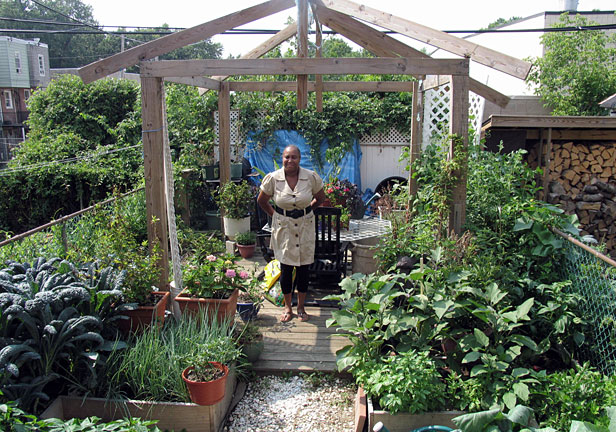 Kale and hearty: Growers Alliance member Cynthia Bly in her Northeast Philadelphia garden.Photo: Philadelphia Horticultural Society
Kale and hearty: Growers Alliance member Cynthia Bly in her Northeast Philadelphia garden.Photo: Philadelphia Horticultural Society
Pennsylvania Horticultural Society’s Growers Alliance
Citywide
Growers Alliance is trying to make small-plot urban farming a viable commercial enterprise. This initiative sprouted from PHS’s City Harvest program, which is in turn part of Philadelphia Green, one of the nation’s largest urban landscape renewal projects. With City Harvest, inmates in the Philadelphia prison system grow vegetable seedlings in greenhouses. The seedlings are then distributed to over 40 community gardens throughout the city. To date, most of the harvests go to feeding the inmates, the growers themselves, or local food pantries. But this year, thanks in large part to a $300,000 grant from the USDA, PHS has begun experimenting with directly supporting commercial growers.
Dubbed Growers Alliance, the program is designed to encourage chemical-free commercial growing on small plots. The project finances the construction of up to six 4-by-8-foot raised beds and provides seedlings gr
own by inmates or at an expanded greenhouse facility operated by Philadelphia’s Weavers Way Co-op farm. Growers are encouraged to sell their produce, and sell they have to neighbors, to restaurants, at local farmers markets and to the Weavers Way Co-op, which operates a dedicated, refrigerated truck (paid for by the USDA grant) that will pick up from any interested Growers Alliance sites.
The 15 current participants have in aggregate an acre of land in production and have grown 9,000 pounds of produce so far this year in their or their neighbors’ backyards or in church yards — not bad for what amounts to a pilot program.
So far, most of the growers are in the west and northwest parts of the city and run the gamut of Philly gardening types. Some are urban-ag aficionados, some are young people and a few are exploring the possibility of making urban farming a career.
But it’s the emphasis on distribution infrastructure that makes Growers Alliance stand out. By supplying a truck to make the rounds of the participating sites, the project addresses one of the main challenges to any business — i.e. where to sell your product. Only in its first year, Growers Alliance has the potential soon to rival the largest Philly farms.
